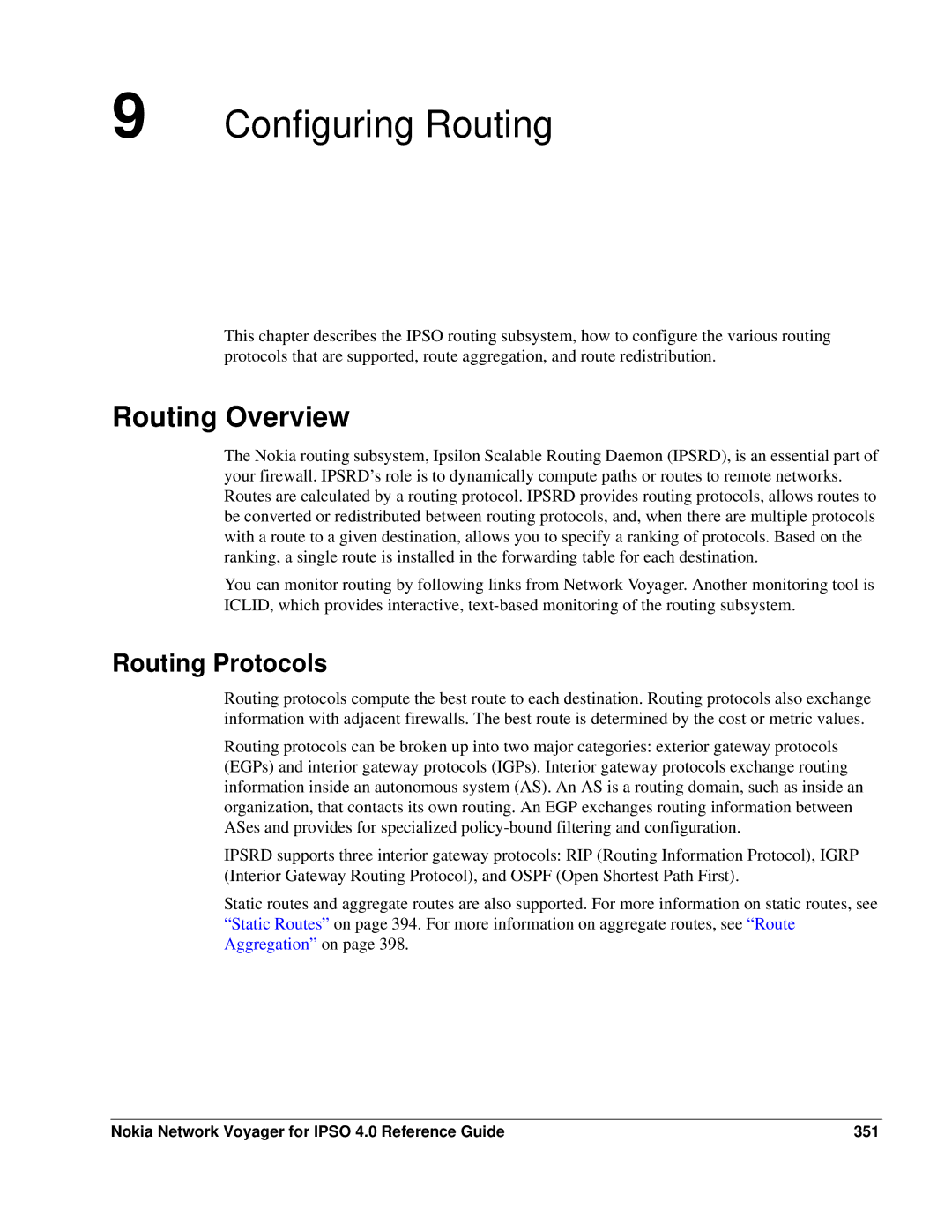9 Configuring Routing
This chapter describes the IPSO routing subsystem, how to configure the various routing protocols that are supported, route aggregation, and route redistribution.
Routing Overview
The Nokia routing subsystem, Ipsilon Scalable Routing Daemon (IPSRD), is an essential part of your firewall. IPSRD’s role is to dynamically compute paths or routes to remote networks. Routes are calculated by a routing protocol. IPSRD provides routing protocols, allows routes to be converted or redistributed between routing protocols, and, when there are multiple protocols with a route to a given destination, allows you to specify a ranking of protocols. Based on the ranking, a single route is installed in the forwarding table for each destination.
You can monitor routing by following links from Network Voyager. Another monitoring tool is ICLID, which provides interactive,
Routing Protocols
Routing protocols compute the best route to each destination. Routing protocols also exchange information with adjacent firewalls. The best route is determined by the cost or metric values.
Routing protocols can be broken up into two major categories: exterior gateway protocols (EGPs) and interior gateway protocols (IGPs). Interior gateway protocols exchange routing information inside an autonomous system (AS). An AS is a routing domain, such as inside an organization, that contacts its own routing. An EGP exchanges routing information between ASes and provides for specialized
IPSRD supports three interior gateway protocols: RIP (Routing Information Protocol), IGRP (Interior Gateway Routing Protocol), and OSPF (Open Shortest Path First).
Static routes and aggregate routes are also supported. For more information on static routes, see “Static Routes” on page 394. For more information on aggregate routes, see “Route Aggregation” on page 398.
Nokia Network Voyager for IPSO 4.0 Reference Guide | 351 |
